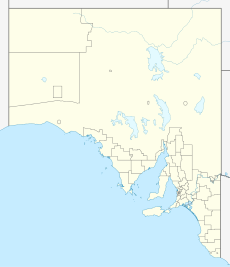Hundred of Para Wirra
|
Para Wirra South Australia |
|||||||||||||||
|---|---|---|---|---|---|---|---|---|---|---|---|---|---|---|---|
| Coordinates | 34°44′06″S 138°54′07″E / 34.735°S 138.902°ECoordinates: 34°44′06″S 138°54′07″E / 34.735°S 138.902°E | ||||||||||||||
| Established | 29 October 1846 | ||||||||||||||
| Area | 265 km2 (102.5 sq mi) | ||||||||||||||
| Region | Adelaide Hills | ||||||||||||||
| County | Adelaide | ||||||||||||||
|
|||||||||||||||
The Hundred of Para Wirra is a cadastral hundred of the County of Adelaide, South Australia, spanning the Torrens Valley in the Adelaide Hills.
The hundred spans a large number of Adelaide Hills locality but is dominated by Kersbrook in the west and Mount Crawford in the east, with the Mount Gould Range forming a natural boundary between the two.
In the west of the hundred are the towns of Inglewood (most part) and localities of Humbug Scrub, Sampson Flat (most part), Millbrook (and Millbrook Reservoir) and Chain of Ponds (most part). Other towns and localities crossing the hundred boundary in the west include Yattalunga (eastern half), Lower Hermitage (east half) and Paracombe (eastern portion). Other towns and localities crossing the hundred boundary in the east include Forreston (north west portion), Cromer (northern half), Mount Pleasant, (north west portion) and Flaxman Valley (west portion).
The hundred was proclaimed by Governor Frederick Robe in 1846 and named for an indigenous compound term meaning 'river forest' (compare: Karra wirra-parri).
...
Wikipedia

